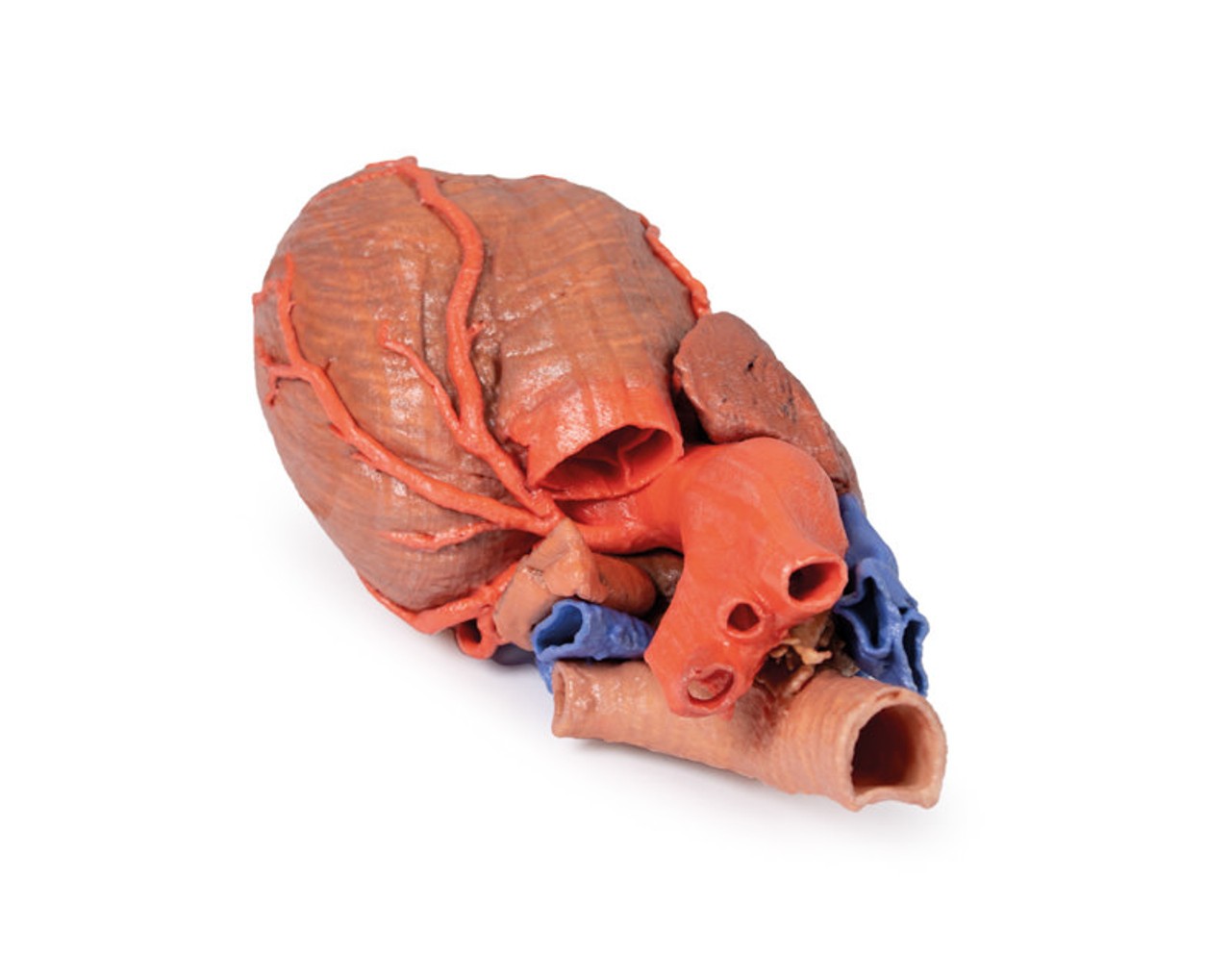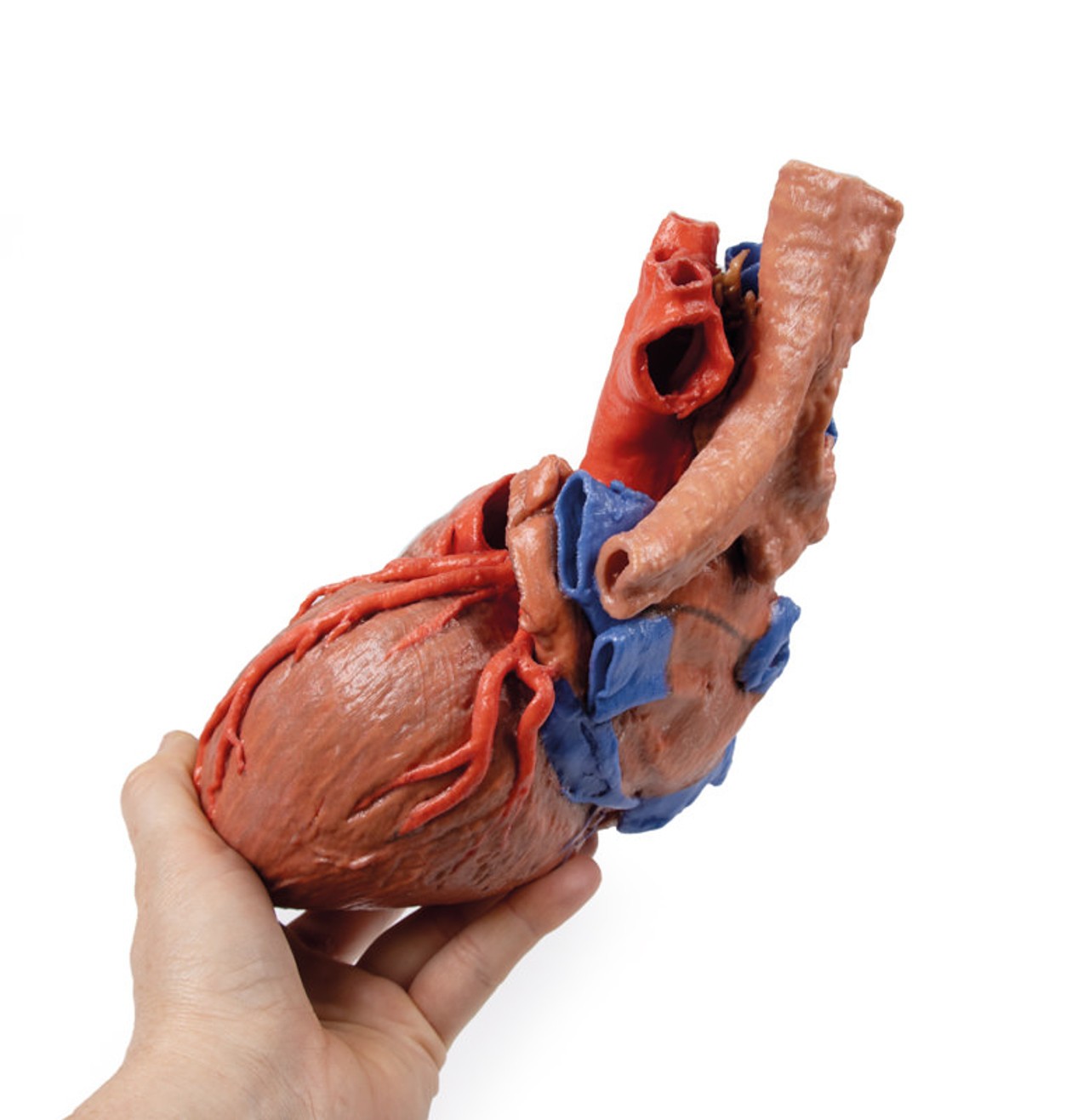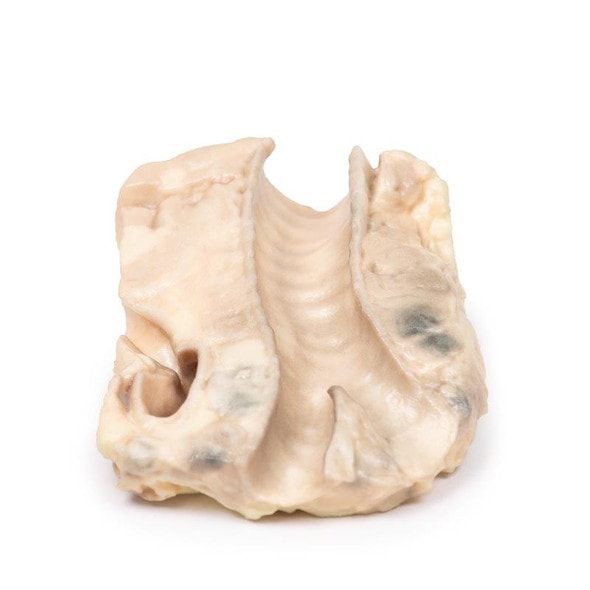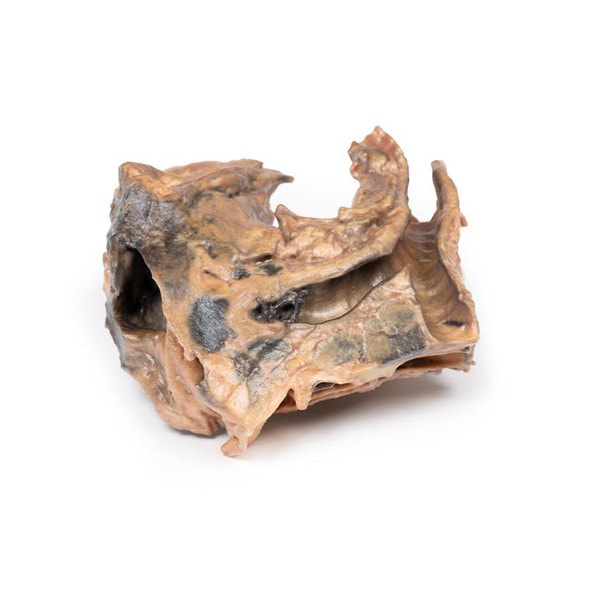- Home
- Anatomy Models
- Vascular System Anatomy Models
- 3D Printed Heart and the Distal Trachea, Carina and Primary Bronchi
Description
At the forefront of medicine and technology, we are proud to offer these incredible, uncompromised replicas of human anatomy. Using the latest 3D printing technology and materials available, this model is an exact replica of a human cadaver, brought to "life" by extensive medical scanning and manufacturing technologies. Over are the days of using ethically questionable cadavers, the mess of hazardous preservation chemicals, and the inaccuracies of plastinated models that often over-enhance anatomy for display, not realism. See the future, and the beauty, of real human anatomy with these incredible anatomical replicas!
This 3D printed specimen preserves the external anatomy of the heart and the distal trachea, carina, and primary bronchi in the posterior mediastinum relative to the great vessels and left atrium (which demonstrates the pericardial reflections of the transverse and oblique pericardial sinuses). An anterior window has been dissected into the right atrium and base of the auricle, exposing the right atrioventricular (tricuspid) valve and passage into the right ventricle. Both the right and left coronary arteries and named branches are visible (with the posterior interventricular artery arising from the right coronary artery). The left auricle has been sectioned to demonstrate the course of the circumflex artery in the coronary groove. The cardiac veins have been removed, but the coronary sinus has been retained inferior to the left atrium. The pulmonary trunk has been removed to expose the (open) pulmonary semilunar valves, while the arch of the aorta is intact to display the origins of the brachiocephalic trunk, left common carotid, and left subclavian. Adjacent to the aorta, the termination of the left and right brachiocephalic veins and azygos vein into the superior vena cava is preserved.
Please Note: Thanks to the flexibility of manufacturing that 3D Printing offers, this model is "printed to order", and is not typically available for immediate shipment. Most models are printed within 15 working days and arrive within 3-5 weeks of ordering, and once an order is submitted to us, it cannot be canceled or altered. Please contact us if you have specific a specific delivery date requirement, and we will do our best to deliver the model by your target date.
Advantages of 3D Printed Anatomical Models
- 3D printed anatomical models are the most anatomically accurate examples of human anatomy because they are based on real human specimens.
- Avoid the ethical complications and complex handling, storage, and documentation requirements with 3D printed models when compared to human cadaveric specimens.
- 3D printed anatomy models are far less expensive than real human cadaveric specimens.
- Reproducibility and consistency allow for standardization of education and faster availability of models when you need them.
- Customization options are available for specific applications or educational needs. Enlargement, highlighting of specific anatomical structures, cutaway views, and more are just some of the customizations available.
Disadvantages of Human Cadavers
- Access to cadavers can be problematic and ethical complications are hard to avoid. Many countries cannot access cadavers for cultural and religious reasons.
- Human cadavers are costly to procure and require expensive storage facilities and dedicated staff to maintain them. Maintenance of the facility alone is costly.
- The cost to develop a cadaver lab or plastination technique is extremely high. Those funds could purchase hundreds of easy to handle, realistic 3D printed anatomical replicas.
- Wet specimens cannot be used in uncertified labs. Certification is expensive and time-consuming.
- Exposure to preservation fluids and chemicals is known to cause long-term health problems for lab workers and students. 3D printed anatomical replicas are safe to handle without any special equipment.
- Lack of reuse and reproducibility. If a dissection mistake is made, a new specimen has to be used and students have to start all over again.
Disadvantages of Plastinated Specimens
- Like real human cadaveric specimens, plastinated models are extremely expensive.
- Plastinated specimens still require real human samples and pose the same ethical issues as real human cadavers.
- The plastination process is extensive and takes months or longer to complete. 3D printed human anatomical models are available in a fraction of the time.
- Plastinated models, like human cadavers, are one of a kind and can only showcase one presentation of human anatomy.
Advanced 3D Printing Techniques for Superior Results
- Vibrant color offering with 10 million colors
- UV-curable inkjet printing
- High quality 3D printing that can create products that are delicate, extremely precise, and incredibly realistic
- To improve durability of fragile, thin, and delicate arteries, veins or vessels, a clear support material is printed in key areas. This makes the models robust so they can be handled by students easily.




























